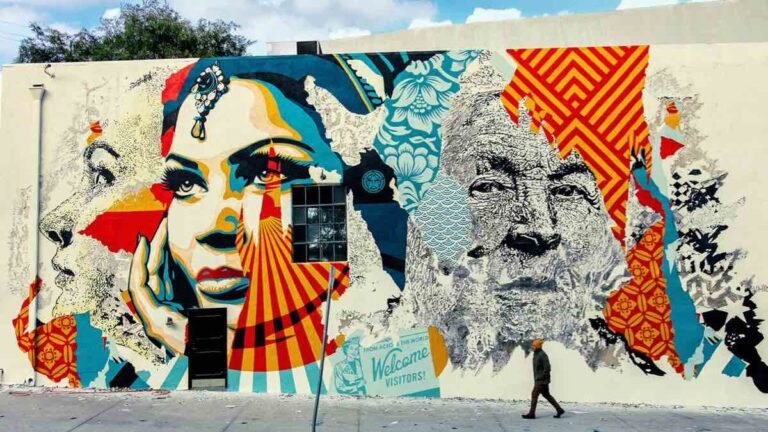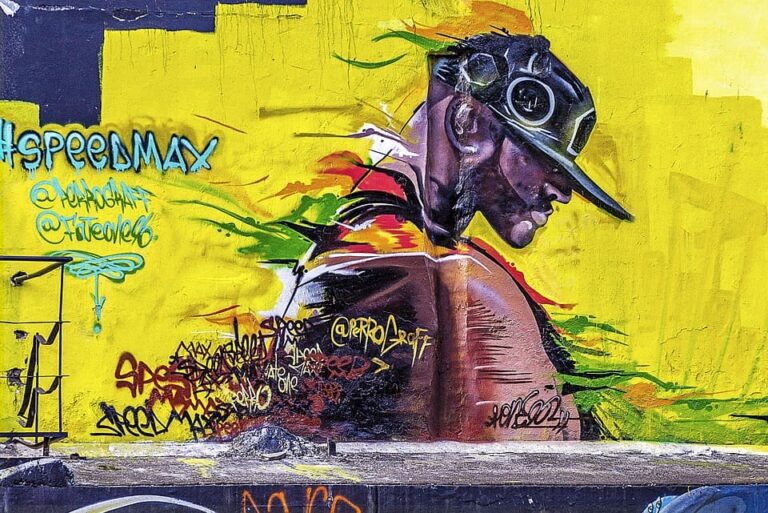What Do You Call A Graffiti Artist? Understanding The Terminology Of Graffiti Art!
Graffiti art is a complex and multilayered form of expression that can encompass anything from simple tags and letters to large-scale murals and public installations. Despite its many forms, however, graffiti art is often misunderstood and undervalued, in part due to a lack of understanding about the artists who create it.
In order to help shed light on this issue, we will explore the various terms used to describe graffiti artists, including the use of the term “graffiti artist” itself.
Read More About: Popular Graffiti artists of all the time
A. Explanation of graffiti as an art form
Graffiti art is a form of self-expression that is often created outside of traditional art institutions. It can take many different forms, from simple tags and letters to large-scale murals and public installations.
Despite its many forms, graffiti art is often seen as vandalism and is therefore often illegal. However, in recent years, many cities and communities have started to recognize graffiti art as a legitimate form of expression and have begun to provide spaces for artists to create and showcase their work.
B. What Do You Call A Graffiti Artist?
There are several terms used to refer to a graffiti artist, including “graffiti writer,” “graffitist,” and “street artist.” The term used can vary depending on the individual and the context in which the term is used.
The purpose of this article is to explore the different terms used to describe graffiti artists and their work. We will examine the evolution of the term “graffiti artist” and how it is perceived in the graffiti community, as well as alternative titles for graffiti artists and the significance of choosing the right terminology when referring to this dynamic art form.
II. Graffiti Artist: The Term
The term “graffiti artist” is often used to describe someone who creates graffiti art. However, this term is not universally accepted within the graffiti community and has a complex history.
A. The use of the term graffiti artist
The use of the term “graffiti artist” has become increasingly popular in recent years, as graffiti art has gained more recognition and legitimacy. However, not everyone in the graffiti community accepts this term, as it can be seen as oversimplifying the complex and diverse nature of graffiti art.
B. The evolution of the term in popular culture
The term “graffiti artist” has evolved over time, reflecting changes in popular culture and the perception of graffiti art. In the past, graffiti art was often seen as vandalism and those who created it were referred to as “vandals” or “graffiti writers.” However, as graffiti art has gained more recognition and legitimacy, the term “graffiti artist” has become more widely used.
C. How the term is perceived in the graffiti community
Perception of the term “graffiti artist” varies within the graffiti community. Some embrace the term as a way to legitimize and validate their work, while others reject it as oversimplifying the complex and diverse nature of graffiti art. Despite this disagreement, the term “graffiti artist” continues to be used widely in popular culture.
The Significance of Proper Terminology in Graffiti Art
Graffiti art has come a long way from its origins as an act of vandalism and rebellion. Today, it is recognized as a legitimate form of art, with many graffiti artists earning recognition and respect in the art world. However, the terminology used to refer to these artists and their work is still a topic of debate, with various alternative titles being used interchangeably.
Alternative Titles for Graffiti Artists
A. Street Artist: The term “street artist” is often used to refer to graffiti artists, but it is a broad term that encompasses many different types of outdoor and public art, not just graffiti. This can lead to confusion and a lack of specificity, making it difficult for graffiti artists to establish a clear identity and recognition in the art world.
B. Muralist: A muralist is an artist who creates large, outdoor wall paintings. While many graffiti artists may create murals, not all graffiti artists are muralists, and not all muralists are graffiti artists. The term “muralist” does not accurately capture the unique style, techniques, and messages that are specific to graffiti art.
C. Graff Writer: “Graff writer” is a term used specifically to refer to graffiti artists who focus on lettering and writing in their work. This term accurately reflects the focus of this particular sub-genre of graffiti art, but it may not accurately reflect the work of graffiti artists who incorporate other elements into their pieces, such as portraits, abstract designs, or characters.
D. Bombing Artist: “Bombing” is a term used to describe the act of graffiti artists quickly and repeatedly covering a large area with their work. The term “bombing artist” reflects this aspect of graffiti art, but it may be perceived as negative or criminal, perpetuating negative stereotypes about graffiti and its practitioners.
The Impact of Terminology on the Perception of Graffiti as an Art Form
The use of the wrong terminology can perpetuate negative stereotypes and misconceptions about graffiti art and the artists who create it. For example, using the term “graffiti vandalism” instead of “graffiti art” reinforces the idea that graffiti is not a legitimate art form, but rather a form of vandalism.
This, in turn, can discourage galleries and museums from showcasing graffiti art, making it harder for graffiti artists to gain recognition and legitimization as legitimate artists.
On the other hand, the use of proper terminology can help to dispel these misconceptions and promote a more positive perception of graffiti art and the artists who create it.
For example, using the term “graffiti artist” instead of “graffiti vandal” gives the artist more credibility and legitimacy, and helps to promote graffiti as a legitimate art form. This, in turn, can encourage galleries and museums to showcase graffiti art and help graffiti artists gain recognition and legitimization as legitimate artists.
Why Do Graffiti Artists Use Spray Paint?
Graffiti artists use spray paint because it provides quick coverage, dries quickly, and allows for a smooth application. It can also be used to create various styles and effects, from thin lines to broad strokes, by adjusting the pressure and distance from the surface being painted.
Additionally, spray paint is easily accessible and relatively cheap, making it a popular choice for graffiti artists.
The Importance of Choosing the Right Title for a Graffiti Artist
The title chosen for a graffiti artist is also important in shaping the public’s perception and understanding of their work. The title should be chosen carefully to accurately reflect the artist’s work and to give them the recognition and legitimacy they deserve. For example, using the title “graffiti artist” instead of “graffiti vandal” gives the artist more credibility and legitimacy and helps to promote their work as a legitimate form of art.
Conclusion
In conclusion, the terminology used to describe graffiti art and the artists who create it can have a significant impact on the perception of graffiti as an art form. The use of proper terminology can help to dispel misconceptions and promote a more positive perception of graffiti art and the artists who create it, encouraging galleries and museums to showcase their work and helping them gain recognition and legitimization as legitimate artists.
Graffiti art is a form of street art that has the potential to be a powerful and transformative force in the art world. By using the proper terminology when referring to graffiti artists and their work, we can help to promote graffiti as a legitimate art form and give graffiti artists the recognition and legitimacy they deserve.
References
- “The Art of Graffiti.” The Metropolitan Museum of Art, metmuseum.org/exhibitions/listings/2007/the-art-of-graffiti.
- “Graffiti and Street Art.” MoMA, moma.org/learn/moma_learning/graffiti-and-street-art.
- “Street Art and Graffiti: A Brief History.” Artnet News, news.artnet.com/art-world/street-art-graffiti-brief
Ruth Aquilani is a renowned graffiti artist known for her bold, colorful, and expressive style. She began her career as a street artist in the early 2000s, quickly making a name for herself in the graffiti community with her unique and striking works of art.









